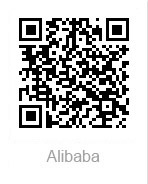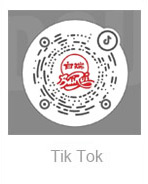Application of calcium carbonate in six downstream industries
Time: 2018-05-17
Calcium carbonate is an inorganic compound, commonly known as: limestone, limestone, stone powder, marble, etc. Main composition: Calcite, is a compound, chemical formula is CaCO₃, is neutral, basically insoluble in water, soluble in hydrochloric acid. It is a common substance on the earth, found in aragonite, calcite, chalk, limestone, marble, travertine and other rocks, and is also the main component of animal bones or shells. Calcium carbonate is an important building material and is widely used in industry. Calcium carbonate is formed by the combination of calcium and carbonate ions, so it is both a calcium salt and a carbonate.
Physical property
White solid, tasteless, odorless. There are two forms, amorphous and crystalline. The crystal type can be divided into rhombic crystal system and hexagonal crystal system, which are columnar or diamond shaped. The relative density is 2.71. 825 ~ 896.6℃ decomposition, at about 825℃ decomposition into calcium oxide and carbon dioxide. The melting point is 1339℃, and the melting point at 10.7MPa is 1289℃. Insoluble in water and alcohol. Dissolved in dilute acid, while releasing carbon dioxide, an exothermic reaction. Also soluble in ammonium chloride solution. Almost insoluble in water. Aragonite: relative density 2.83, melting point 825℃(decomposition). Calcite: Relative density (d25.2) 2.711, melting point 1339℃(10.39MPa). Irritating, calcium carbonate is divided into synthetic and natural two kinds. Stable in air with slight moisture absorption. It has good covering power. It's a strong electrolyte.
Chemical property
In case of dilute acetic acid, dilute hydrochloric acid, dilute nitric acid, bubble boiling, and dissolve. It is decomposed into calcium oxide and carbon dioxide when heated to 900 ° C at 101.325 kpa. Calcium carbonate heated to 900 ° C at one atmospheric pressure will decompose into quicklime and carbon dioxide (industrial CO₂); Calcium carbonate reacts with dilute hydrochloric acid and effervescent to form calcium chloride, water, and carbon dioxide (lab-made CO₂); A solution of calcium bicarbonate is formed when excess carbon dioxide is added to water mixed with CaCO3. Calcium carbonate reacts with a carbonic acid solution (rainwater) to form calcium bicarbonate. CO2 is added to the turbid limewater and the precipitation disappears.
Calcium carbonate is widely used in rubber, plastic, paint, paper, ink, adhesive, sealant and other industries, but also can be used in toothpaste, food, medicine, vocabulary, building materials, chemical fiber and other industries. Today, Xiaobian mainly talks about the application of calcium carbonate in the downstream industry.
Application of calcium carbonate in paper industry
The use of calcium carbonate in the paper industry can make the paper bright, solid structure, easy to write, uniform coating, low friction, easy to discharge moisture and easy to dry.
Papermaking process from acidic to alkaline and neutral, calcium carbonate began to be widely used in the paper industry, the current paper industry is the largest application of calcium carbonate, the annual amount of more than 10 million tons, instead of wood paddle and other pigments, improve the brightness of paper, impermeability, porosity, loose density.
Application of calcium carbonate in coating industry
Calcium carbonate is the first filler of coating, with high brightness, low oil absorption, low density and cheap and easy to obtain, low demand for emulsion, not only reduce the cost of latex paint, but also play a skeleton role, improve the thickness of the coating film, hardness, wear resistance and so on.
At the same time, the super-refined heavy calcium carbonate has a strong spatial separation ability, which can give full play to the hiding power of titanium dioxide and reduce the amount of titanium dioxide added in the paint. At present, the annual production of coatings in China is about 14 million tons, and the demand for heavy calcium in the industry is about 3 million tons.
Application of calcium carbonate in plastics industry
The annual output of plastic products in China has exceeded 30 million tons, and the powder as filler accounts for 10% of the total plastic products, while calcium carbonate is calculated in the total amount of various powder fillers. At present, the various specifications of calcium carbonate used in China's plastic industry every year are at least 2.1 million tons or more, which has a broad market. Calcium carbonate has become the preferred filler material in the plastic processing industry because of its low price, easy to use, few side effects and many other advantages.
The addition of calcium carbonate in plastics can improve the dimensional stability of plastic products, improve the hardness and rigidity of plastic products, the addition of calcium carbonate can change the rheological properties of plastics, calcium carbonate powder helps to mix with other components, improve the processing performance of plastics, improve the astigmatism of plastics, because calcium carbonate has a high whiteness, it has a good whitening effect in plastic products. The matting property of plastic products has been greatly improved. In addition, the price of calcium carbonate is much lower than the price of plastic, which can increase the volume of products, and the addition of calcium carbonate will reduce the cost of plastic products.
Application of calcium carbonate in rubber industry
Calcium carbonate is filled in rubber, which can increase the volume of the product and has the filling effect, so as to save the amount of expensive rubber to achieve the purpose of reducing costs. Calcium carbonate filling rubber can obtain higher tensile strength, wear resistance and tear strength than pure rubber sulfide. The increase of calcium carbonate filling also greatly reduces the vulcanization time of rubber, and has a significant reinforcing effect in natural rubber and synthetic rubber, and can adjust the consistency, which is an excellent non-toxic environmental protection material.
Application of calcium carbonate in ink
Calcium carbonate is added to the ink after surface modification. The ink formulated has good bone and viscosity, good printing performance, and high stability. Fine particles are easily compatible with other raw materials, so the printing is smooth, the dot is complete, the covering power is strong, and the gloss is equivalent to aluminum barium white. As a filler, it can improve the gloss and brightness of the ink and reduce the cost.
Application of calcium carbonate in adhesives
Calcium carbonate as a semi-reinforcing filler used in adhesives can change the properties of the adhesive layer, reduce the cost of the adhesive, and basically do not react with the base material. Adding a certain amount of calcium carbonate to the adhesive can increase its bonding strength, hardness, heat resistance, dimensional stability, and reduce the curing shrinkage rate and linear expansion coefficient. Such as the commonly used glass adhesive, without the use of reinforcing fillers, the bonding force is very poor, adding calcium carbonate can improve the strength of the bonding joint, increase the surface hardness, increase the viscosity and thermal conductivity, increase the impact toughness and wear resistance, improve the medium resistance of the adhesive and reduce the cost.







 Home
Home  News
News


